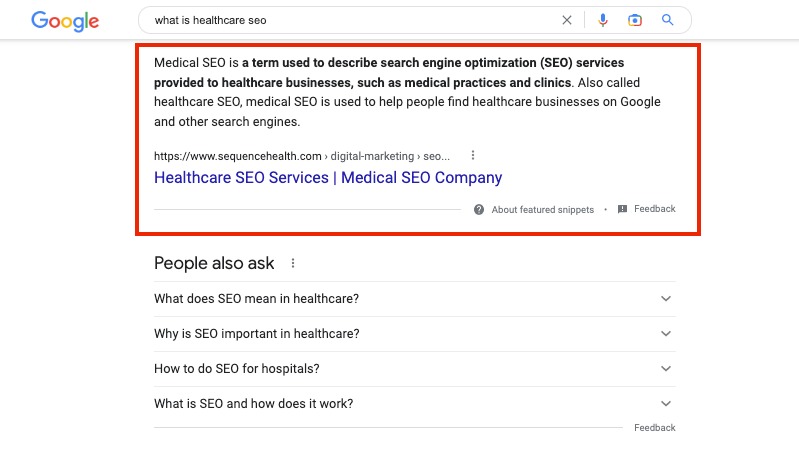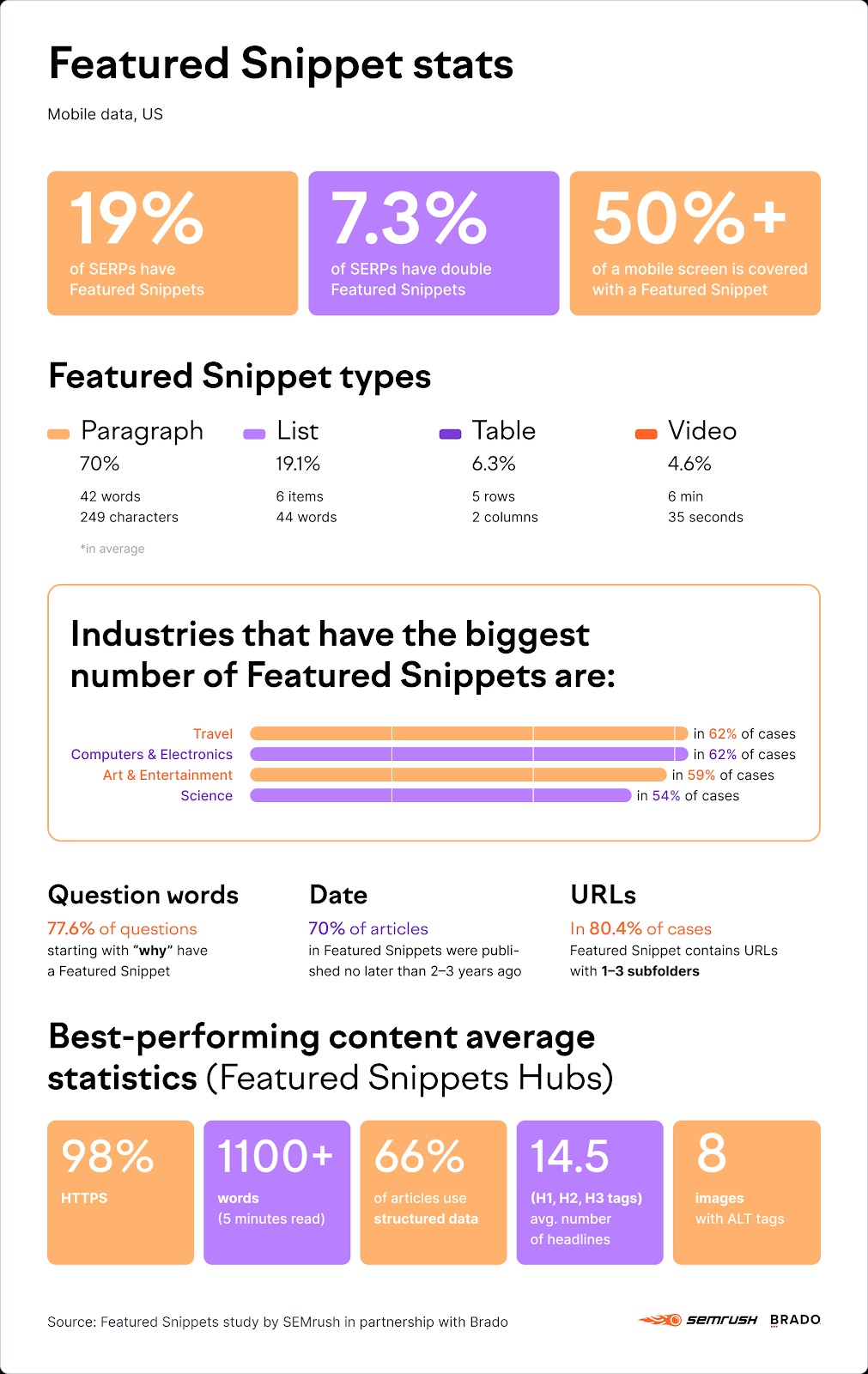Featured snippets are a type of enhanced SERP feature that shows a preview of a page’s content to help answer questions quickly. They usually show up at the top of or near the top of the SERP.
Featured snippets look something like this on a desktop computer:

Below is what that would look like on mobile:

There are different types of featured snippets, such as lists and tables.
However, our past research showed the overwhelming majority of these show up as a small paragraph (like the examples above). You can learn more about the different types of featured snippets here.
How to Rank for a Featured Snippet
You can maximize your chances of ranking for a featured snippet by:
- Structuring your content with organized headers
- Use relevant questions as headers and respond immediately with the answer
- Find keywords with informational intent that naturally fit in with the content
- Format your paragraphs with lists and tables where needed

Adding schema markup to your content can also improve your chances of ranking for a featured snippet. Schema markup is HTML you can add to a webpage to help search engines easily understand and find information. Our blog can help you decide what type of schema to use and how to add it correctly.
How Semrush Collects Data About Featured Snippets
We crawl Google’s SERPs to collect the URLs linked to featured snippets. This allows you to see if a keyword ranks for a certain position or appears on the SERP at all in our Organic Research toolkit.
- When we scan a keyword’s SERP, we identify whether or not a featured snippet is present anywhere on the results page.
- If a featured snippet is present on the results page but the queried domain doesn’t rank for it, its icon will appear gray in the SERP features column.
If a featured snippet is present as a part of the queried domain’s organic search result, its icon will appear blue beside the number in the Position column.